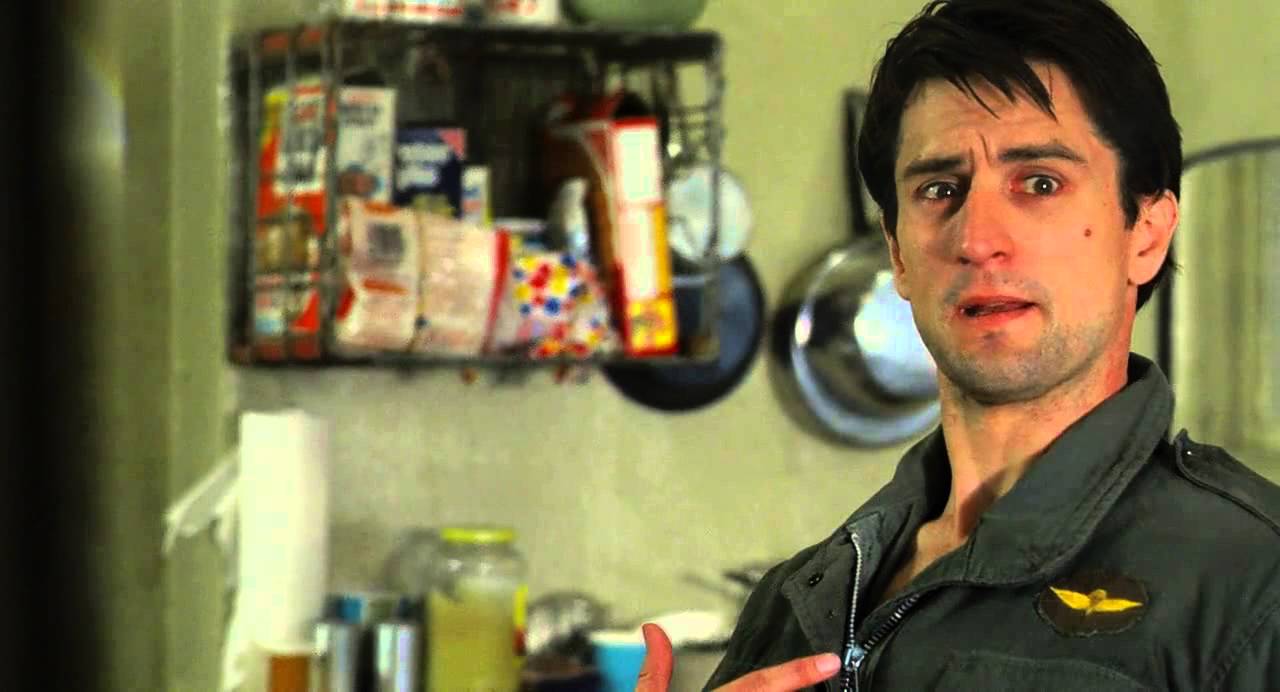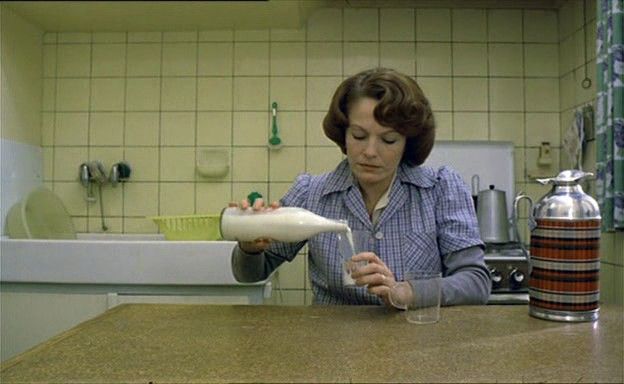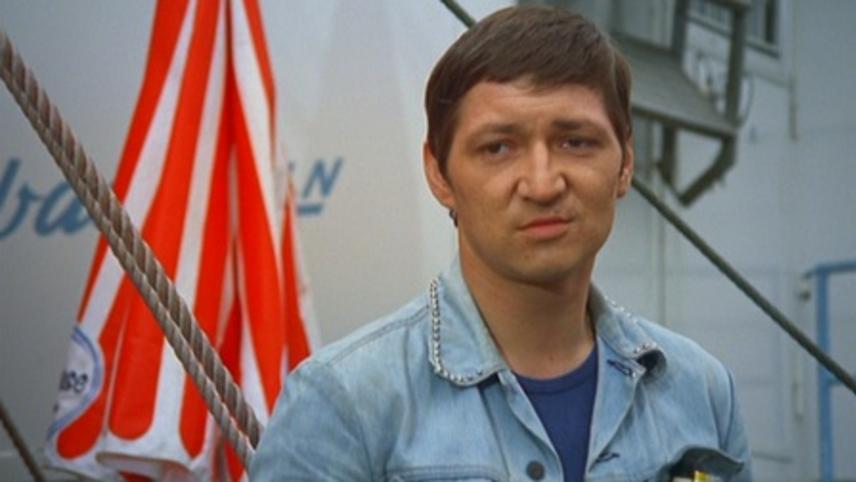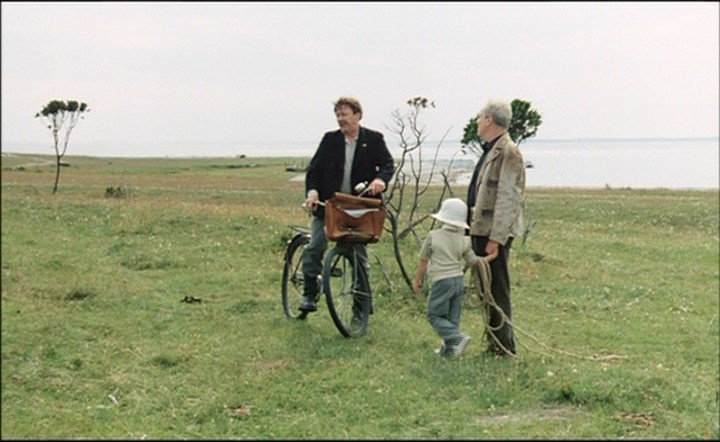6. Taxi Driver (Martin Scorcese, 1976)

Travis Bickle (Robert Deniro) wants a nightshift driving cab due to his insomnia. The opening scene of a job interview in Scorcese’s Taxi Driver is a brilliant piece of exposition. We find out so much about Travis in these first few minutes. He is 26, working class, an outsider, has little education, and yet possesses an intelligent and witty manner.
Travis’ apartment is cramped with cracked walls, as is the hero’s of Bresson’s Pickpocket (1959). We see Wonderbread, Budweiser, dirty dishes, a depressing existence. Travis writes in his journal, another Bressonian device. The screenplay is by Paul Shrader (Light Sleeper,1992) who cites Bresson as a major influence.
Travis becomes fascinated by Betsy, a volunteer for presidential candidate Charles Palantine. He drops by campaign headquarters and Betsy agrees to have pie with him. He soon takes her on a movie date and much to her horror it is a porno flick. Travis offers to take her elsewhere but she is no longer interested.
Travis’ voiceover tells us that after a long series of indistinguishable days, his life has changed. He buys a variety of handguns, which he customizes. He exercises and vows to cut out and unhealthy food. He does target practice, appearing ready to engage in guerrilla-style warfare.
Travis desires a mission in life, yet still does not quite know what this mission is. He seems to be deteriorating mentally. He shaves his hair into a mohawk, yelling at imaginary opponents in his room, pointing guns at them.Then one day, Travis befriends Iris (Jodie Foster) a child prostitute who he had encountered previously running from her pimp Sport (Harvey Keitel). Travis has discovered his mission. His mission is to liberate Iris from her horrific circumstances.
Winner of the 1976 Palme d’Or, a film of great direction, acting and script. While the violence at the film’s end is controversial, this is not an action film. It is mostly about the struggle and development of the main character. A marvellously erratic jazz-infused score by Bernard Herrmann, the composer’s last film project.
7. Jeanne Dielman, 23, Quai du Commerce, 1080 Bruxelles (Chantal Akerman, 1975)

In this film with barely any dialogue, Jeanne (Delphine Seyrig) is a woman who lives a quiet life with her son. Through the film’s long and grinding course, we watch Jeanne at her daily routines, discovering that she supports herself with acts of prostitution, which fit into her schedule as any another kind of domestic chore, such as peeling potatoes or making schnitzel. Her life is monotonous but Jeanne seems to take joy in domesticity, devoted to it in a ritualistic way.
Framed and shot beautifully by cinematographer Babette Mangolte, Akerman was scoffed at for even using a female cinematographer at this time, which gives credence to the kinds of concerns a film like Jeanne Dielman attempts to address. As in some of Bresson’s most sympathetic characters, if anything, Jeanne Dielman is a portrait of female imprisonment, expressed in long continuous shots which develop the utmost sympathy for its main character.
8. Fox and His Friends (Rainer Werner Fassbinder, 1975)

Franz/Fox (Fassbinder himself) is the ultimate outsider. He’s so poor he can’t even scrape up funds for his weekly lottery ticket. He’s homosexual, and his boyfriend Klaus, who runs the sideshow where he works as Fox the Talking Head, just got arrested. So now he’s also out of a job. Fox encounters Max, who picks him up at a public toilet. Although Max is obviously wealthy, he refuses to help Fox get his ticket, which Fox gets funds for by scamming a florist.
Some days later we see Fox at Max’s place. He has won the lottery, so it gives him a measure of interest, although it is clear that Max’s friends look upon him condescendingly, as they are more cultured. Fox goes home with Eugen, and they are discovered the next morning by Eugen’s boyfriend Philip. Eugen tells Philip that he will explain everything to Eugen later.
Fox moves in with Eugen, who convinces him to buy a fancy apartment and furniture. Ultimately he is hussled for everything. A tale of human cruelty with Fassbinder’s portrayal of Fox being one of his most realistic and lovable characters. Many of Fassbinder’s films share much with Bresson’s, not just in their depictions of misery and critiques of classism or other injustices, but in their shared brilliant use of Brechtian distancing.
9. The Sacrifice (Andrei Tarkovsky, 1986)

The film opens with Alexander (Erland Josephson), a critic and lecturer on aesthetics, planting a dead tree. He gets his son “Little Man”, who cannot speak due to an operation, to help him and tells him a story about a monk who watered a dead tree every day. After 3 years, the tree suddenly blossomed.
Otto (Allan Edwall) the postman comes by on a bike and we discover it is Alexander’s birthday. The three of them walk towards the house in a lush field by the sea, beautifully captured by Bergman cinematographer Sven Nykvist. Later Alexander celebrates at home with Otto, his wife Adelaide (Susan Fleetwood), stepdaughter Marta (Filippa Franzén), and Victor (Sven Wollter), a local doctor who performed the operation on Little Man.
Filmed in very subdued greys and earth tones, the flowing dresses of the women and the house’s decor are a scene from another era.
A maid Maria (Guðrún Gísladóttir) appears and asks if there is anything further to do. Adelaide says no but then supplies a list of chores, hardly glancing at Maria. One might note how restrictive Adelaide’s flowing dress and shawl appear, but since there are servants waiting on her, it is not necessary for her to do physical labour. We find out that Otto is Maria’s neighbour, and is a collector of paranormal tales.
Maria leaves and the sound of planes overhead shakes the house. The television and radio announce that a war has started. Adelaide becomes hysteric, so Victor gives her an injection, and Marta as well. Although Alexander declared himself an atheist earlier, he now prays to God, promising he will sacrifice anything for all to be normal again.
Otto comes to Alexander secretly and tells him he must sleep with Maria, who has special powers, in order to fix everything. Alexander sneaks out on a ladder Otto has placed outside the window and goes to Maria on a bicycle. They make love levitating in the air and Alexander returns. The next day, Marta tells Adelaide that Victor is going to Australia.
Adelaide gets extremely angry but he seems stoic. “I am tired of being your nursemaid and warden” says Victor a bit angrily, while the real nursemaid Julia works silently behind him, always tired and annoyed looking. “Tired of wiping your noses” he says, as though a voice for what the servant is incapable of speaking. As well as being a kind of spiritual manifesto, the film seems also a subtly-drawn critique of bourgeois society. After all, it is apparent from the situation that the entire world is in the balance in Alexander’s home. His family is not just family, but the human race in its entirety.
In his book Sculpting in Time Tarkovsky wrote –“I am only interested in the views of two people: one is called Bresson and one called Bergman.” He employs Bresson’s style of speaking most strongly through image, and unlike the many Nouvelle Vague directors who also revered Bresson, shares the same notion of transcendence so vital to Bresson’s work.
One might note that while non-diegetic music is almost absent in Bresson, his striking use of Mozart’s Great Mass in C minor in A Man Escaped (1956) is a sublime piece of religious music. When Tarkovsky uses non-diegetic music it is usually Bach, in the case of The Sacrifice, Bach’s aria Erbarme dich, mein Gott, at the beginning and close of the film, the camera closing in on the dead “Japanese tree” watered by Little Man, and then panning skyward – conveying beautifully Tarkovsky’s message of transcendence.
10. The Young Törless (Volker Schlöndorff, 1966)

This film follows Törless (Mathieu Carrière), a teenage boy sent off by his parents to a military school. Soon after he arrives someone steals from his new friend Beineberg (Bernd Tischer) and it doesn’t take long for the boys to figure out that it was Basini (Marian Seidowsky). As a result, led by Beineberg the boys initially threaten Basini and rough him up a bit. But this quickly turns into repeated beatings and rape. Törless does not take part in these assaults. He mostly observes, and eventually runs away.
This film not only shares themes with Bresson, but has the spare visual qualities of some of Bresson’s great early films, Franz Rath’s excellent cinematography is a convincing depiction of turn of the century life. As in many Bresson films, Törless keeps a journal. He also expresses an interest in imaginary numbers, that which cannot be explained by logic – an inner life
. At the film’s end he tells the teachers examining him about the events with Basini that he didn’t report Basini because he was fascinated with what was unfolding. He saw how easily the lines between good and evil are blurred, and learned that one has to be on one’s guard.
Even though he was observing carefully, he did not truly know what was going on until Basini himself told him what the other boys were doing. A thoughtful film which raises many questions about the nature of observation, victimhood and human cruelty.
Author Bio: S. D. Johnson is a poet and cinephile. Besides Antonioni, her favorite directors include Agnes Varda, Rainer Werner Fassbinder, Andrey Tarkovsky, Jean-Luc Godard, Robert Bresson and many, many others.